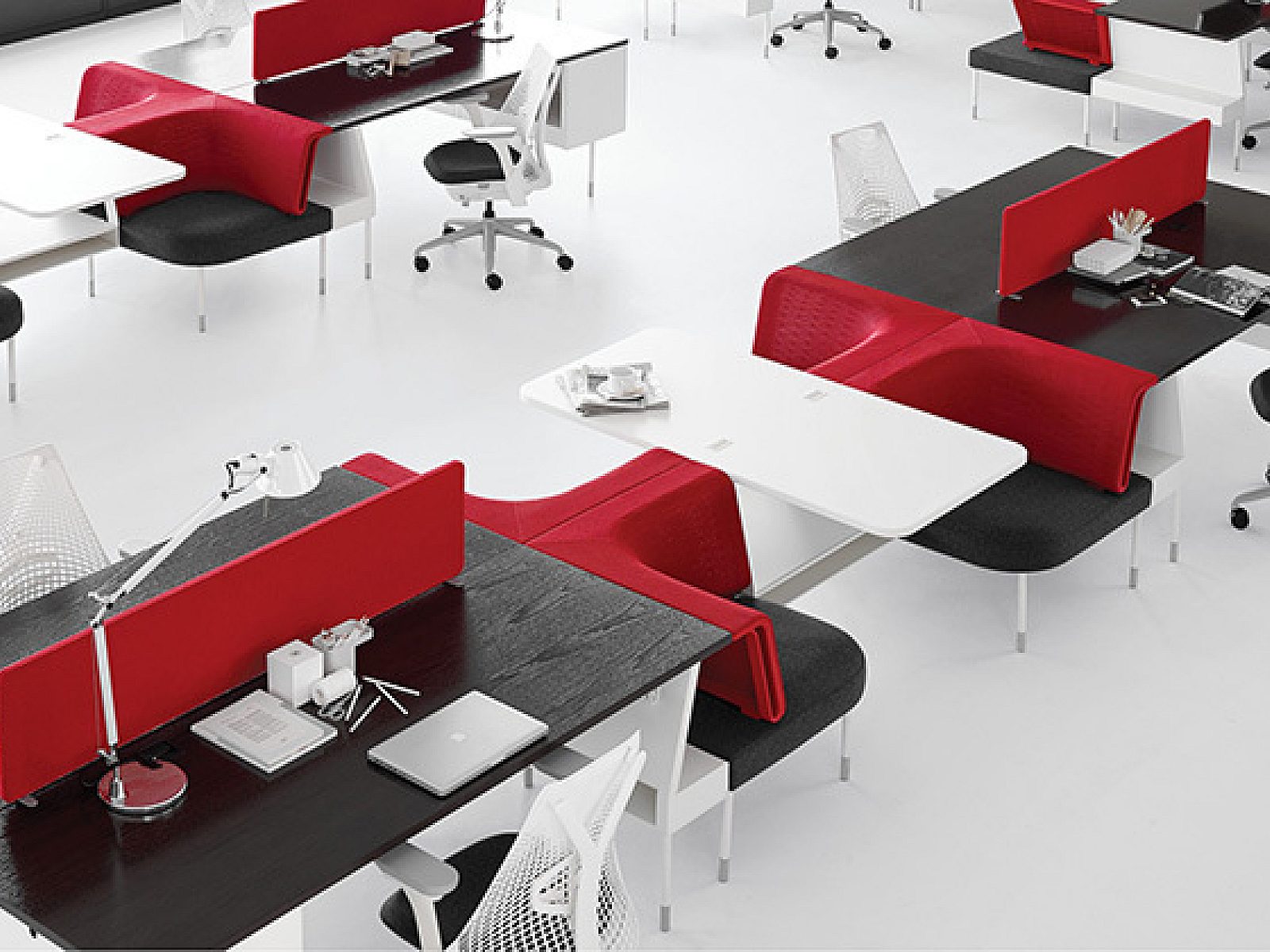Stay Current: Alexander Girard
Reflecting his love of international folk art and unhampered by contemporary dictums of style and taste, Alexander Girard explored wildly different approaches to color, form, pattern, and construction. The resulting body of work is staggering not only in sheer volume and creativity, but due to its fundamental qualities of beauty and usefulness, remains completely relevant today.

Girard Color Wheel Ottoman. Playful, colorful, and graphic, the Color Wheel Ottoman is unmistakably the work of Alexander Girard. Available in an array of bold colors, or two distinctive stripes, this low upholstered piece serves equally well as a footrest, coffee table, extra seat, or conversation starter.
Girard Environmental Enrichment Panels. These decorative silkscreen designs known as the Girard Environmental Enrichment Panels were originally released in 1972 to personalize and add an element of “aesthetic functionalism” to the installation of Action Office environments. Unlike Girard’s printed textiles, the panels consist of single stand-alone images that range from abstract patterns to figurative pictograms. Playful and bold, the Girard Environmental Enrichment Panels serve as the exclamation point at the end of Girard’s long tenure with Herman Miller.
Textiles and Objects Poster. The Textiles & Objects Poster is evidence that, in Girard’s hands, advertising can rise to the level of art. Among the many invitations, signs, product tags, and other graphical elements Alexander Girard designed to promote the midtown Manhattan Textiles & Objects shop he launched with Herman Miller in 1961, this faithful, screen-printed re-edition of the 26-by-20-inch poster is available framed or unframed.
Plus by Alexander Girard. Textiles of the 20th Century pays homage to the great multidisciplinary designers of the last century, whose timeless work has been faithfully reproduced to meet modern performance requirements, ensuring their ongoing legacy.
Millerstripe by Alexander Girard. Alexander Girard designed this textile during his tenure as founding director of the Herman Miller Textile Division (1952 to 1973).




























